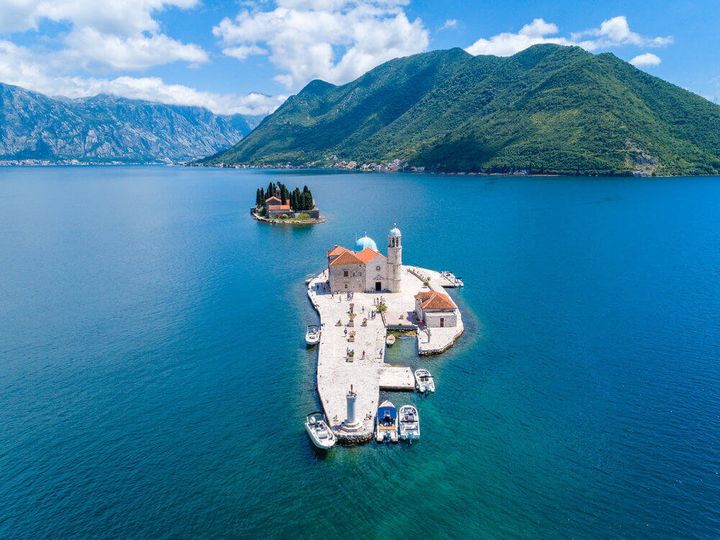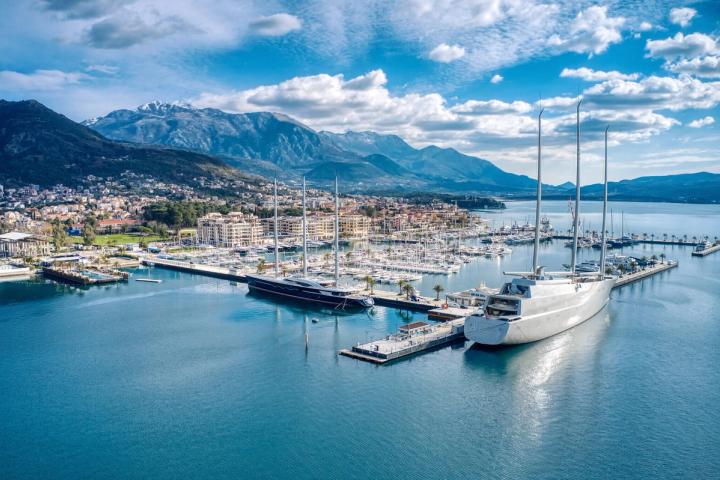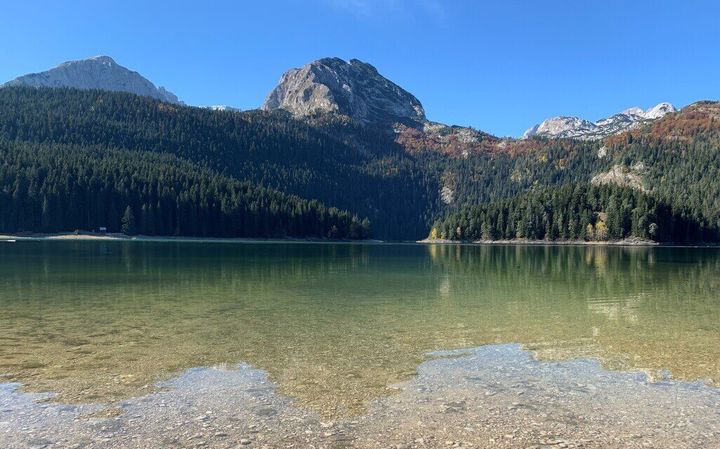Map view
Montenegro's top sights
Places mentioned in the guide
From ancient walled towns to stunning beaches and pristine national parks, Montenegro has something to offer to every type of traveler. Here are the highlights for first-time visitors to make sure you don't miss a thing:
1. Bay of Kotor
The Bay of Kotor, the most impressive coastal feature along the Montenegrin coastline, is dotted with old towns boasting ancient walls, narrow streets, and historic churches. From Kotor's Old Town, you can climb up to the San Giovanni Fortress for breathtaking views of the bay. Additionally, a short boat trip from Perast takes you to Our Lady of the Rocks, a picturesque island church.
2. Budva
Budva is the premier resort in Montenegro and the country's most-visited destination. In summer, it attracts hordes of holidaymakers eager to explore its Old Town (entirely rebuilt after the 1979 earthquake), sunbathe on its excellent beaches and party until dawn in its many lively bars and clanging clubs. Just be prepared for crowds and high prices; it’s a wallet-draining paradise.
3. Lovćen National Park
Located directly behind Kotor, the 3rd largest national park is home to the stunning Njegoš Mausoleum. This structure houses the tomb of the country's greatest hereo, Petar II Petrović Njegoš, and offers breathtaking views of the surrounding areas. The drive up the serpentine road from Kotor is not for the faint-hearted, but the views of the bay are totally worth it.
4. Tivat
Once a naval base, Tivat has transformed into a chic destination, largely due to Porto Montenegro. This luxury marina boasts designer boutiques, upscale restaurants, and a scenic promenade. Expect high prices and a lack of historical charm found in other Montenegrin towns. The Naval Heritage Collection museum and the nearby Plavi Horizonti Beach are worth a visit.
5. Cetinje
The old royal capital of Montenegro, Cetinje is rich in culture and history. Visit the Cetinje Monastery, which houses important relics, and the King Nikola’s Palace, now a museum showcasing royal artifacts. The National Museum of Montenegro and the Biljarda also offer deep insights into Montenegrin history. The town provides a nice break away from the crowds on the coast.
6. Sveti Stefan
Sveti Stefan is an iconic fortified island connected to the mainland by a narrow causeway. Once a fishing village, it has been transformed into a luxury resort managed by Aman. The views of the island from the coastal road are stunning. However, access to the island itself is restricted to hotel guests, making it more of a visual attraction than a hands-on experience for most tourists.
7. Stari Bar
Located inland from the coastal town of Bar, the ancient ruins of Stari Bar are perched on a hilltop surrounded by olive trees. Explore the remnants of this once-thriving city, including its churches, fortifications, and aqueduct. The area offers a glimpse into Montenegro’s diverse past, having been influenced by Romans, Byzantines, Venetians, and Ottomans.
8. Skadar Lake and Virpazar
Skadar Lake, shared with Albania, is a haven for birdwatchers and nature lovers. The small village of Virpazar is the gateway to the lake, offering boat tours and proximity to local wineries. The Pavlova Strana viewpoint offers stunning views of the lake and Rijeka Crnojevića river.
9. Ostrog Monastery
One of the most important pilgrimage sites in the Balkans, Ostrog Monastery is stunningly carved into a sheer cliff face. The monastery, dedicated to Saint Basil of Ostrog, consists of two levels connected by a steep, winding path.
10. Durmitor National Park
A UNESCO World Heritage site, Durmitor is known for its rugged mountains, deep canyons, and glacial lakes. The park offers excellent hiking, skiing, and rafting opportunities. The Tara River Canyon, the deepest in Europe, is particularly famous for white-water rafting and the Tara Bridge provides stunning views of the gorges. The Black Lake near Žabljak is another highlight, ideal for hiking and picnicking.
11. Biogradska Gora National Park
One of Europe’s last primeval forests, Biogradska Gora is a sanctuary of biodiversity. The centerpiece, Biogradska Lake, is surrounded by lush forest and offers serene boat rides and easy hikes. The park’s well-preserved ecosystems make it a perfect spot for nature lovers.
12. Ulcinj and Velika Plaza
Known for its distinctively Albanian character, Ulcinj features a charming old town with a mix of mosques, narrow streets, and historical buildings. Nearby, Velika Plaža is the longest beach in Montenegro, stretching for 12 kilometers. It’s a popular spot for kitesurfing and sunbathing. The nearby Ada Bojana, a triangular island, offers more secluded beaches and a nudist resort.





















